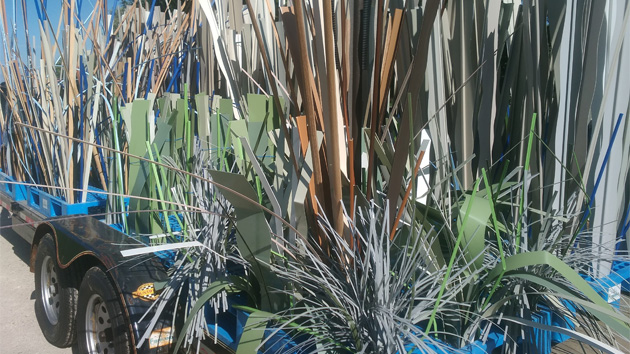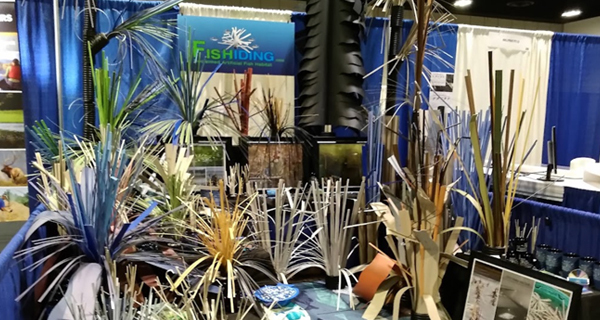-

Fish Habitat Mats
The Board Room Modular Fish Habitat Mat
The BoardRoom Fish Habitat Mat is an entire 4048 Habitat Mat filled with wide profile PVC board like limbs in semi rigid, but bendable planks. This intermediate sized and spaced lounging area is off limits...
-

Reclaimed PVC Fish Habitat Structures
PVC Pipe Fish Fry Feeder Two Pack
We have a fantastic new pvc fish feeder product that will feed your fish naturally on its own, never having to buy or add any feed pellets. Never. Ever. Forever. Our new fry feeder system will change the way you think about feeding your ponds fish. Hang...
-

Reclaimed PVC Fish Habitat Structures
Safehouse Deluxe Mid Depth Fish Habitat/Fish Attractor
This all new deluxe model of our original SafeHouse fish attractor, will increase surface area and stability in your mid depth and transition fish habitat plans. Weighing an additional ten pounds more than the original, the double layered lower...
-

Reclaimed PVC Fish Habitat Structures
Mid Depth Big Barrel Fish Habitat Tree Four Pack
These newest large and robust, transition depth fish habitat barrels, offer the textures, density and coarse limbs for intermediate travel lines the fish need. Standing over six feet tall, these 4 individual 175 pound barrels, will stay upright...
-

Reclaimed PVC Fish Habitat Structures
Shallow Transition Fish Habitat Combo Five Pack
This five pack of mid depth and transition sized essential fish habitat units, will take care of your fish with a good sized protective area around your lakefront dock or fishing spots. Creating a multitude of densities and flexibilities for the...
-

Reclaimed PVC Fish Habitat Structures
The Fishadow Fish Habitat with Vertical Uprise 2 pack
Currently out of this material and model, waiting to find more unwanted stock, heading for the landfill.....stay tuned! This unique fish crib concept from Fishiding is here with the Fishadow. This moving, flowing, and vertically...
-

Reclaimed PVC Fish Habitat Structures
The Fortress Self Opening Fish Habitat
We have opened a new chapter in the artificial habitat handbook with a whole new set of possibilities in fisheries management. This first of it's kind Fortress of cover, unfolds itself straight out of the box and comes ready to landscape your...
-

Reclaimed PVC Fish Habitat Structures
The Bunker Transition Fish Habitat
Our newly improved Fish Bunker mid depth fish attractor, transition depth, reclaimed PVC fish crib model, now has a lot more cover, limbs, variety and added self contained weight. The original model has been protecting fish for well over a decade, now...
-

Reclaimed PVC Fish Habitat Structures
The Palace Ultimate Transition Fish Habitat
Uniquely shaped, proven and unlike any others, this artificial fish habitat model makes an awesome addition to the multitude of textures shown in our other mid depth fish cribs. More wide material than fine, this mid sized pond structure,...
-

Reclaimed PVC Fish Habitat Structures
The Stakeout Crappie Stake Bed 3 pack
Finally, a permanent solution to the time consuming art of installing stake beds for crappie, bass and panfish. Vertically displayed fish cribs, resemble cattails and standing timber that allow fish to navigate through the maze of standing...
-
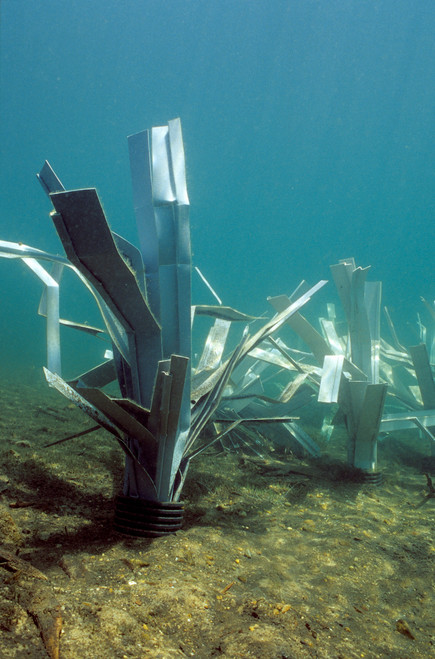
Reclaimed PVC Fish Habitat Structures
Safehouse Artificial Fish Habitat
The Safehouse multi purpose mid depth artificial fish habitat, stands 48" tall and weighs about 16 pounds each. These proven and cost effective fish habitat units, allow fish, bugs and underwater creatures of virtually all sizes, to take refuge to hunt...
-
Fish Habitat Marking Buoys
Smallspot fish structure spots
Number one fish attractor buoy on the market for over fifteen years and counting! The SmallSpot fish attractor buoy and fish marker excels in keeping you and the fish on the spot! After the fish habitat drops and the bubbles disappear, the spots rise...
Mid-Depth Fish Habitat
Initially, young fry hatch, feed, grow and mature in the shallow water habitat they are spawned in. Next, they begin to move deeper as they grow and mature, utilizing these ultra important, transition area depths and cover types. Bass habitat providing dense cover that is a bit more open, but plenty of tight spots to get inside and hide when needed. You need quality products, such as our fishtree, to provide the best habitat for your fish.
"Complexity is the state of having many different parts connected or related to each other in a complicated way." Variety of densities, wide and thin, short and tall, combine to add the complexity these fish are looking for. Bass structure, fish attractors and true fish habitat prevails when present. Stake beds are a great option to bring in more fish.
These little guys are food for the others and only a few inches long. They still need to be really careful to not get eaten by larger predators at this stage. Bass especially, prowl the outside edges of transitional dense cover, trying to get inside and catch a meal. Let us help you put together a custom layout and habitat design, specifically to fit your needs. Like any productive landscape, variety is the key in cover to attract a variety of species that can benefit from its offerings. Bass pond structure allows fish and aquatic creatures multiple options of where to spend time hunting, resting or hiding.
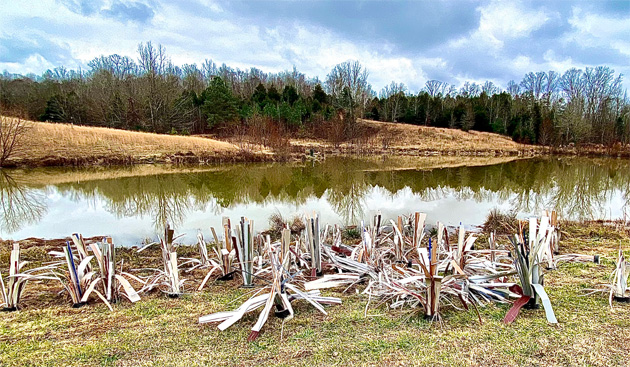
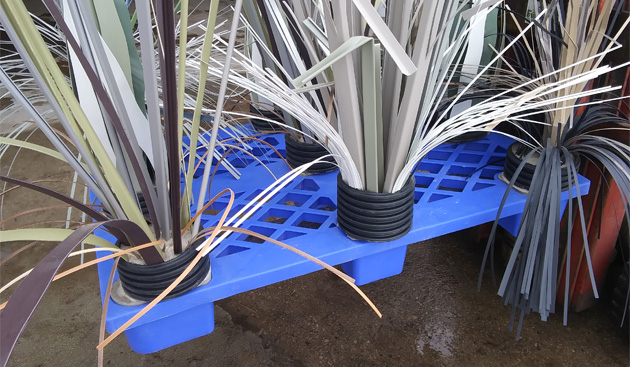
hen these "teenagers" begin to explore their deeper surroundings, the best case scenario is some sort of protection and cover to follow out into deeper water. Creating a "roadway" of reclaimed fish habitat and protective cover the shallow fish hides, will provide this important transition, needed by virtually all species. Without this important line of concealment, the smaller fish can get picked off by the predators looking for a meal as they explore waters beyond their shallow spawning areas. Same concept as a tree row for game like deer, they need something to follow, trying to stay concealed from danger. Habitat products standing from about 48 inches tall up to about 60" tall, are considered the mid depth/transition models for average depths of four to ten feet deep. FREE SHIPPING!
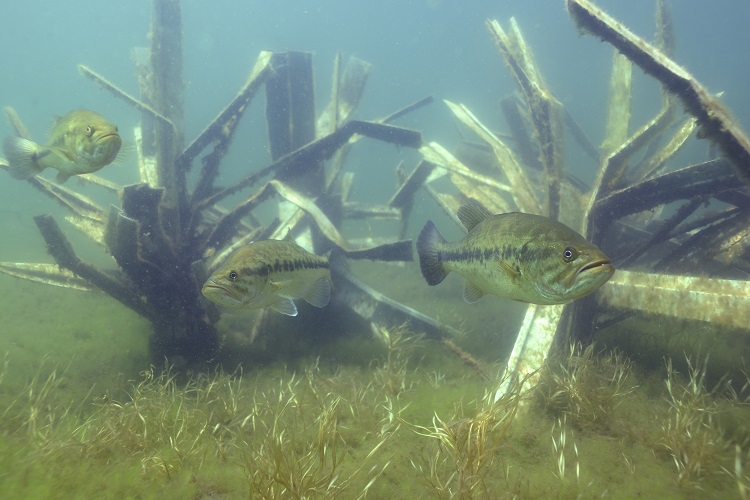
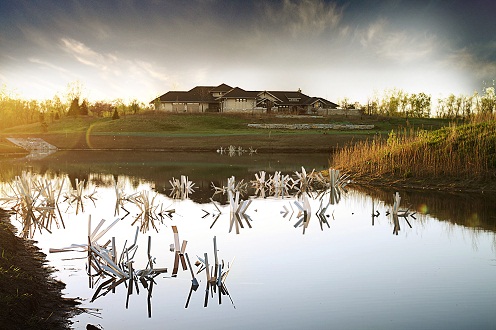
Check out our ten part underwater video series shows how fish interact with our products in real time video and time lapse photos, learn along with us here!
The larger the area of habitat and cover you provide, the larger number of fish it will be able to support using it at one time. We recommend at least three to five habitat units of any type be used in a group, although seven to ten will hold dozens of large fish and forage. Experiment with varieties and layouts to offer the fish the most choices on any given day. Allowing the limbs to just touch each other during installation, lets the smaller fish stay protected as they travel the transition cover out to the depths.
